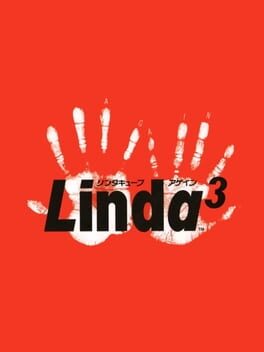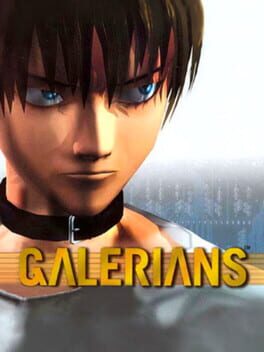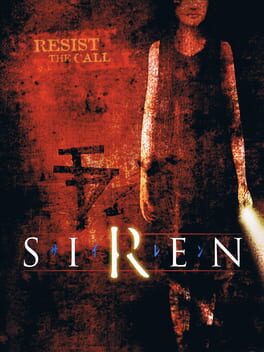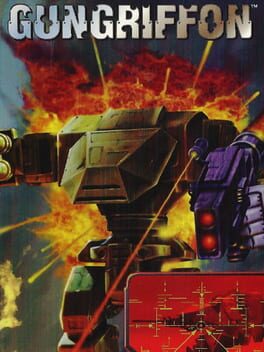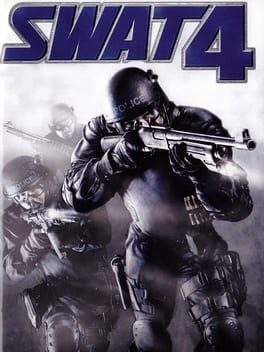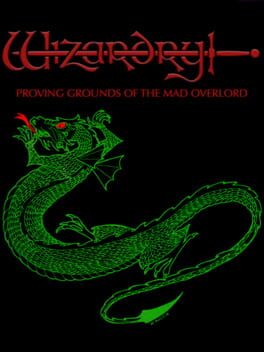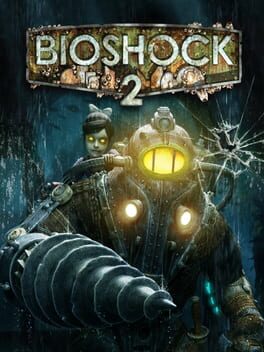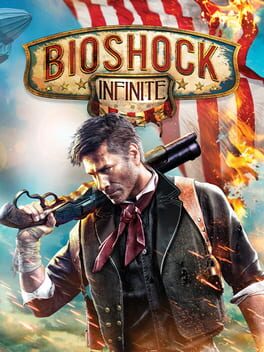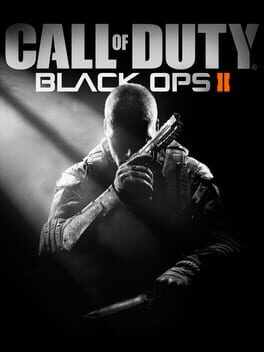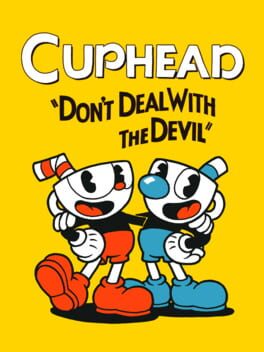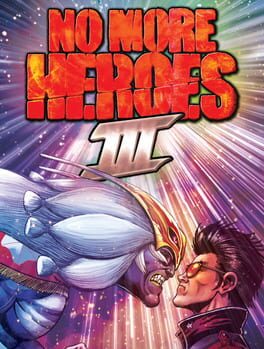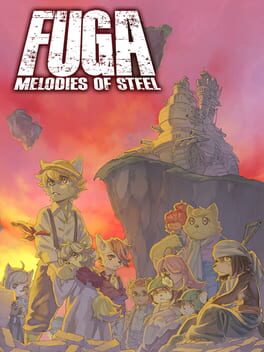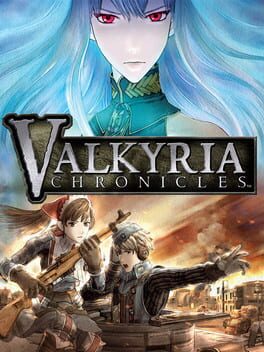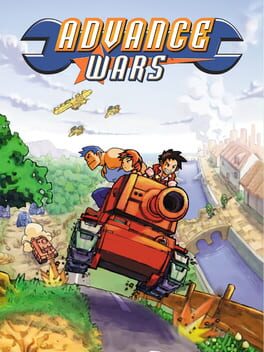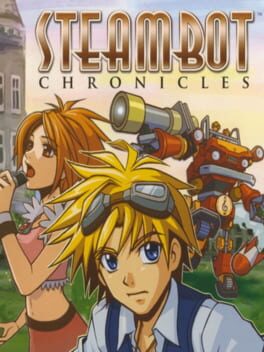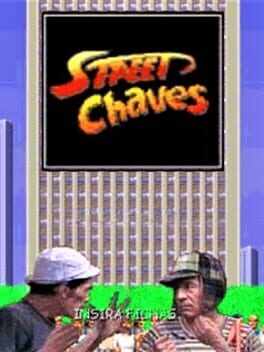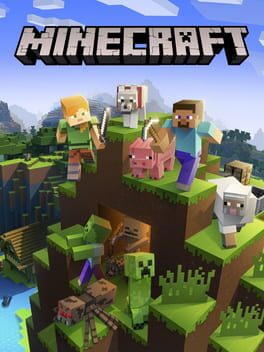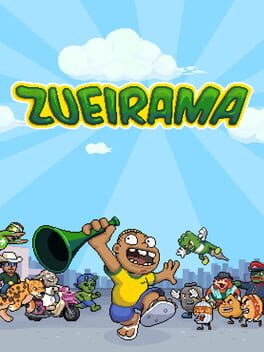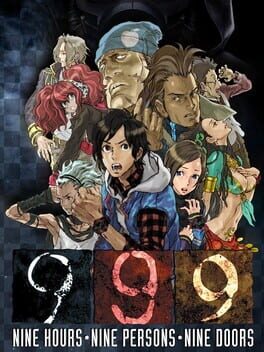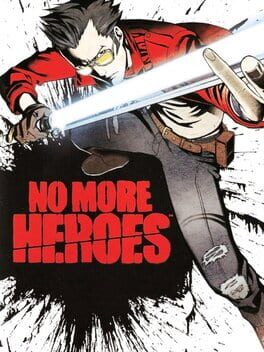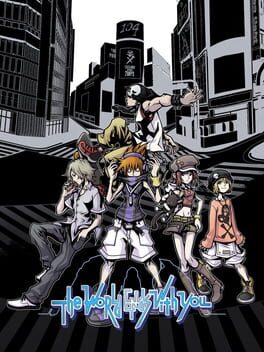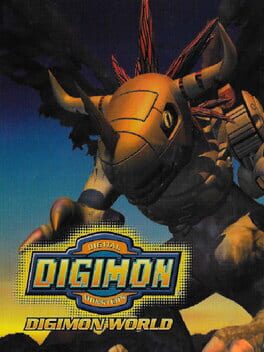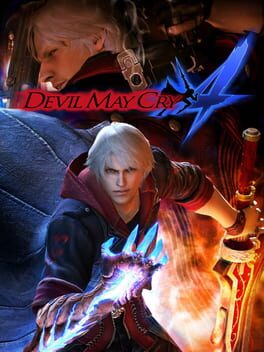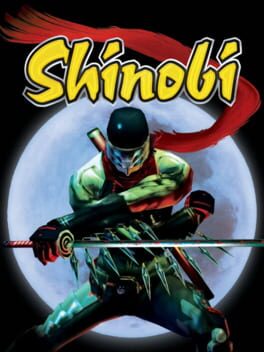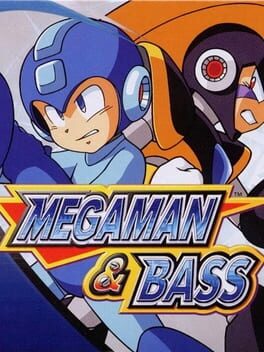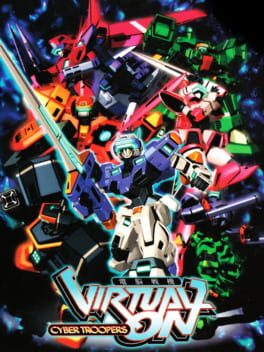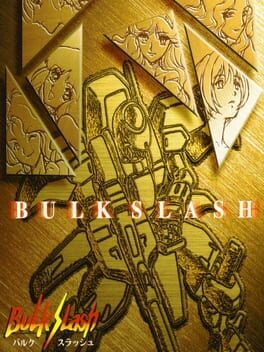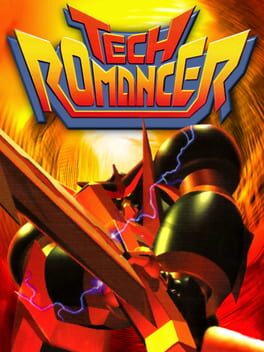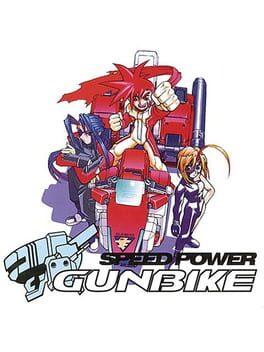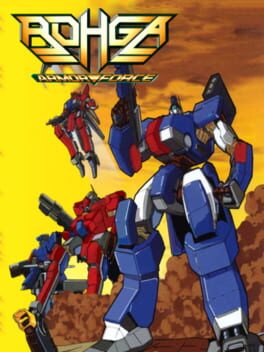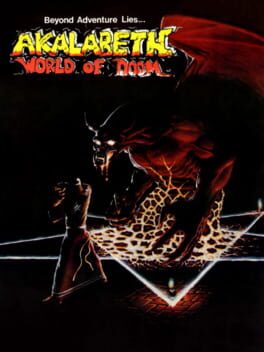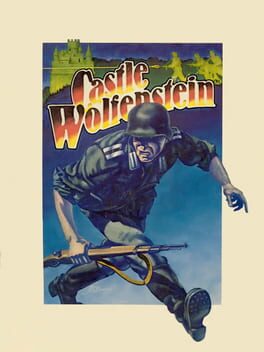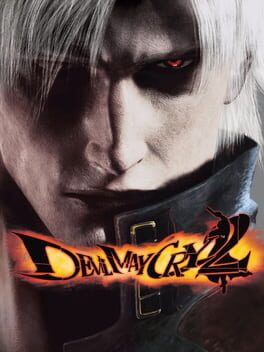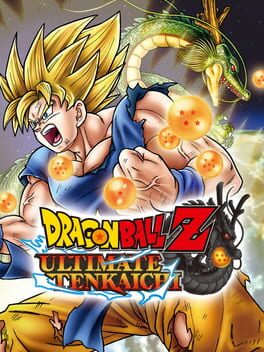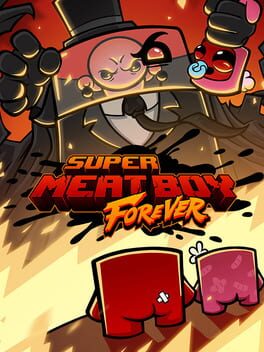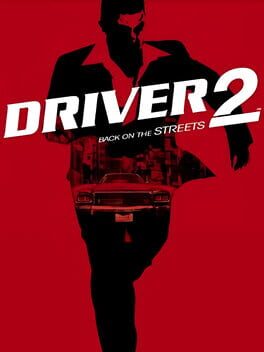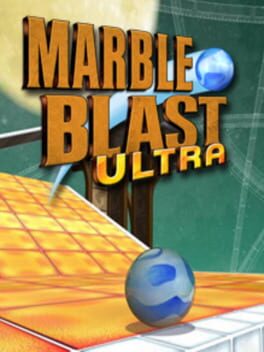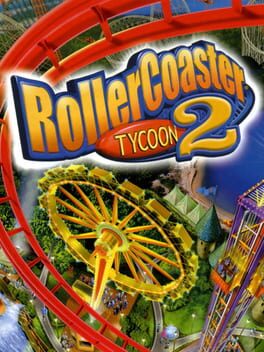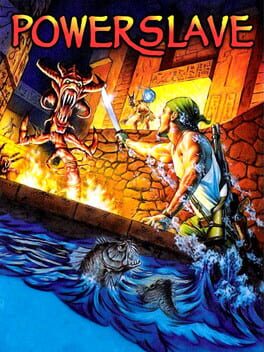Pikadourei
284 reviews liked by Pikadourei
Linda Cube Again
1997
Still working my way through this one but to say that waiting over a decade, obsessing over every one of Tanaka's drawings in Cannabis Works for it, trying to imagine what the hell this game could possibly be, only for it to still exceed expectation is more than enough for me. A game made exactly for me 30 years in advance.
The PlayStation can produce mind-boggling effects.
As much as it is a clunky, unpalatable piece of shit, I fucking love this game. King's Field IV is an old school dungeon crawler where you fight so very many skeletons (there's a lot of skeletons). It also has possibly the best vibes of any game I've played, rivaled only by Dark Souls perhaps.
King's Field is oppressive, its world dying, but you can bet your ass off some banger tune will be going off in the background at all times. Albeit quite slow (your turn speed is literally 5 rpm, unless of course you walk through a spiderweb, halving it), the exploration is also legitimately very satisfying. There are a myriad of fun, optional illusory walls and hidden items, and the levels are surprisingly well realized and interconnected. It's always incredibly relieving to stumble upon a save point after delving through a crypt for 30 minutes, and at -1 mph no less.
I particularly remember when I finally emerged in one of the game's central hubs after hours of tense spelunking. The area is a lush, colorful forest, one of King's Field's few above-ground locales, and completely unlike anywhere else in the game. It too, has fallen from its former glory, yet it is the first real reprieve in what has thus far been quite a grueling experience. It's beautiful— in all its crunchy, early PS2 game grace.
King's Field IV is certainly not for everyone, but it is unique and ethereal, truly a charming little game if you can stomach it.
As much as it is a clunky, unpalatable piece of shit, I fucking love this game. King's Field IV is an old school dungeon crawler where you fight so very many skeletons (there's a lot of skeletons). It also has possibly the best vibes of any game I've played, rivaled only by Dark Souls perhaps.
King's Field is oppressive, its world dying, but you can bet your ass off some banger tune will be going off in the background at all times. Albeit quite slow (your turn speed is literally 5 rpm, unless of course you walk through a spiderweb, halving it), the exploration is also legitimately very satisfying. There are a myriad of fun, optional illusory walls and hidden items, and the levels are surprisingly well realized and interconnected. It's always incredibly relieving to stumble upon a save point after delving through a crypt for 30 minutes, and at -1 mph no less.
I particularly remember when I finally emerged in one of the game's central hubs after hours of tense spelunking. The area is a lush, colorful forest, one of King's Field's few above-ground locales, and completely unlike anywhere else in the game. It too, has fallen from its former glory, yet it is the first real reprieve in what has thus far been quite a grueling experience. It's beautiful— in all its crunchy, early PS2 game grace.
King's Field IV is certainly not for everyone, but it is unique and ethereal, truly a charming little game if you can stomach it.
Galerians
1999
Has a good grasp on the fusion of biohorror and Gothic gloom that made Resident Evil so unique and leverages that to attempt more emotional and thematic ambition than its B-movie inspiration. Flirts juuust enough with "chuunibyou mommy issues" that it's all the more satisfying when the game ultimately refuses the player-by-proxy power fantasy. It's schematic - one level to establish the tone, one to generate a human core, one to flesh out the setting, and one to tie it all with a neat little bow - but that keeps it focused even when it's indulging in the kind of conceptual excess that Resident Evil rarely allowed itself. Babylon Hotel didn't have to be populated with a bunch of freaks, but I'm glad it was.
The tank controls and janky survival horror combat are to be expected, but what I really can't countenance are the boss fights. Damage sponges with minuscule vulnerability windows, every one of them! Seriously, how many survival horror bosses have ever been good? I can think of maybe three that are even tolerable.
The tank controls and janky survival horror combat are to be expected, but what I really can't countenance are the boss fights. Damage sponges with minuscule vulnerability windows, every one of them! Seriously, how many survival horror bosses have ever been good? I can think of maybe three that are even tolerable.
Siren
2003
Gungriffon
1996
The smell of tarnished metal...the steely iron clash. You're just one more pilot among them. Their fathers spoke proudly of serving the greater good, and their mothers saw the devastation lying ahead. It wages on into this 21st century of late-capitalist warfare, trading out cavalry for HIGH-MACS mechs. Nations conglomerate under defense pacts, water and other resources run scarce, and you're either going to survive a conqueror or become a statistic.
Gungriffon doesn't bash you over the head with its themes. Like similar mech action series (think Armored Core), it's about having a blast first & thinking of questions later. You can go from portentous briefing screens to hard-rockin' gunfights to a cheery high scores menu in a matter of minutes. The game combines a simple, fast, and engaging game loop with just enough worldbuilding depth to keep you hooked. As the first Saturn title I ever played & completed, I couldn't have asked for anything better.
This 1996 Saturn exclusive was something of a passion project for the late Takeshi Miyaji, one of Game Arts' co-founders. His fondness for Kee Games' '70s battler Tank, plus his work on previous successes like Silpheed, eventually led him & co-developers to make a 3D mech game pushing the Saturn to its early limits. In short, they saw the ailing system as a way to achieve something even more impressive. Game Arts had built their reputation on squeezing incredible audiovisuals & playability out of tricky platforms like the PC-8801. Even with the Saturn's faults, they could make something even the PlayStation would covet.
Rather than make either a strict simulation or arcade romp, Game Arts blended both approaches. Gungriffon isn't the easiest mecha game out there to learn, but it's on the easier end of simcade. Your face buttons handle everything from acceleration & deceleration to jumping & night vision. Movement involves a mix of the D-pad and holding down strafe. You can cycle through weapons quickly, turn only your turret while moving in a direction...there's a good amount of fluidity & skillful play here. Even if you're unused to first-person mecha action, the game's initial missions aren't that punishing, letting you get to grips with controls & mission progression.
Gungriffon consists of 8 main missions, 2 training sorties, and replay incentives such as end-of-level rankings & difficult modes. I wouldn't call it a content-rich experience, but what's here is quality over quantity. After a standard kill-em-all opening battle, your objectives branch out into escort jobs, stealth missions, & base invasions. The game ends on a tense, oppressive dive into a nuclear missile silo where you fight past other HIGH-MACS pilots of your caliber to deactivate a launch. You're able to simultaneously save in-between missions a run & redo missions for a higher score ranking. For its time, this was a player-friendly package.
Granular controls, well-balanced difficulty, a bevy of different foes, & mission variety are all well and good. But what sets this apart from MechWarrior 2, Thunder Strike 2, & other mid-'90s mechanized action classics is the aforementioned score aspect. Like other score-heavy Saturn greats (ex. NiGHTS), this emphasis on player skill & performance isn't just for earning bragging rights. The game wants you to play fast & aggressive, albeit with intelligence. Turtling is both harder & less desirable here than in Gungriffon's more sim-heavy brethren, but still viable when necessary.
None of this would be all that fun without the technical prowess needed for even early 3D military combat. I brought up Armored Core earlier for a reason. Both games wrought fast 3D graphics for the genre at key intervals in their systems' lifecycles. Gungriffon's solid draw distance, environment detail, & elevation in level design keeps it competitive with more ambitious titles later in the Saturn's life. You also get an aesthetically enticing but usable HUD mimicking that of cockpits from mecha anime & figher jets. With all the chaos happening on-screen, Gungriffon's a technical triumph for a console saddled with 3D woes.
Game Arts hardly skimped on the rest of the game's polish & presentation, either. Story scenes are efficient, painting a dire picture of a weaponized near-future forever embroiled in conflict. Sound design ranges from heavy clanking to atmospheric ambiance to the strident cries of your perishing comrades. Above all, the mercurial, genre-spanning soundtrack from ex-Shining composer Motoaki Takenouchi dominates the soundscape. I became a fan of his classically-tinged prog rock & ambient style here, finally shackled from FM synthesis & able to either rouse or discomfort any player. Were it remastered today, Gungriffon would retain its mystique through audiovisuals alone.
That's another thing it shares with Armored Core: an alluring combination of tests & tropes to keep you coming back. Mecha games struggle so often with presenting distant, sometimes alienating worlds of war in an entertaining fashion. They risk boring or frustrating players almost as often as they risk compromising the harsh worldviews they portray. Gungriffon succeeds at balancing the gravity of its story conflict with player agency & replayability. Much like From Soft's later take on the genre (just without the customization angle), Game Arts wants you to stay in high spirits even as you obliterate enemy camps & ace pilots like yourself.
Thanks to strong sales & critical reception, Gungriffon would become a small but notable series on Saturn, PS2, & Xbox. It dwindled away as Game Arts' other major IP, the RPG series Grandia, fell on hard times. The difficult move to HD game development ultimately pushed Game Arts and its properties into an identity-robbing merger with GungHo, but I hold out a sliver of hope for Gungriffon's return in my lifetime. At the very least, I'd love to see some developers create a throwback first-person mecha game in this vein, perhaps with more of an arcade bent to contrast the recent crop of Armored Core-like indies.
If you've got a Saturn or means to emulate it, Gungriffon's one banger of a system-pushing mecha classic. I've yet to try its Saturn sequel (which doesn't need an English fan patch, but could benefit from one), and the Xbox game's a blind spot for me also. I'll confidently recommend the PS2 entry, Gungriffon Blaze, strips away some of the sim-y bits while nearly perfecting the original's structure, adding analog controls & other modernizations. But I'll get into that later with a proper review. Until then, I hope the seminal Game Arts mecha FPS is now on your radar or higher up your shortlist!
(Shout-outs to Thexder & Veigues for paving the way. Those are much simpler mecha action titles compared to what Game Arts later made, but you can see the evolution towards Gungriffon within them.)
Gungriffon doesn't bash you over the head with its themes. Like similar mech action series (think Armored Core), it's about having a blast first & thinking of questions later. You can go from portentous briefing screens to hard-rockin' gunfights to a cheery high scores menu in a matter of minutes. The game combines a simple, fast, and engaging game loop with just enough worldbuilding depth to keep you hooked. As the first Saturn title I ever played & completed, I couldn't have asked for anything better.
This 1996 Saturn exclusive was something of a passion project for the late Takeshi Miyaji, one of Game Arts' co-founders. His fondness for Kee Games' '70s battler Tank, plus his work on previous successes like Silpheed, eventually led him & co-developers to make a 3D mech game pushing the Saturn to its early limits. In short, they saw the ailing system as a way to achieve something even more impressive. Game Arts had built their reputation on squeezing incredible audiovisuals & playability out of tricky platforms like the PC-8801. Even with the Saturn's faults, they could make something even the PlayStation would covet.
Rather than make either a strict simulation or arcade romp, Game Arts blended both approaches. Gungriffon isn't the easiest mecha game out there to learn, but it's on the easier end of simcade. Your face buttons handle everything from acceleration & deceleration to jumping & night vision. Movement involves a mix of the D-pad and holding down strafe. You can cycle through weapons quickly, turn only your turret while moving in a direction...there's a good amount of fluidity & skillful play here. Even if you're unused to first-person mecha action, the game's initial missions aren't that punishing, letting you get to grips with controls & mission progression.
Gungriffon consists of 8 main missions, 2 training sorties, and replay incentives such as end-of-level rankings & difficult modes. I wouldn't call it a content-rich experience, but what's here is quality over quantity. After a standard kill-em-all opening battle, your objectives branch out into escort jobs, stealth missions, & base invasions. The game ends on a tense, oppressive dive into a nuclear missile silo where you fight past other HIGH-MACS pilots of your caliber to deactivate a launch. You're able to simultaneously save in-between missions a run & redo missions for a higher score ranking. For its time, this was a player-friendly package.
Granular controls, well-balanced difficulty, a bevy of different foes, & mission variety are all well and good. But what sets this apart from MechWarrior 2, Thunder Strike 2, & other mid-'90s mechanized action classics is the aforementioned score aspect. Like other score-heavy Saturn greats (ex. NiGHTS), this emphasis on player skill & performance isn't just for earning bragging rights. The game wants you to play fast & aggressive, albeit with intelligence. Turtling is both harder & less desirable here than in Gungriffon's more sim-heavy brethren, but still viable when necessary.
None of this would be all that fun without the technical prowess needed for even early 3D military combat. I brought up Armored Core earlier for a reason. Both games wrought fast 3D graphics for the genre at key intervals in their systems' lifecycles. Gungriffon's solid draw distance, environment detail, & elevation in level design keeps it competitive with more ambitious titles later in the Saturn's life. You also get an aesthetically enticing but usable HUD mimicking that of cockpits from mecha anime & figher jets. With all the chaos happening on-screen, Gungriffon's a technical triumph for a console saddled with 3D woes.
Game Arts hardly skimped on the rest of the game's polish & presentation, either. Story scenes are efficient, painting a dire picture of a weaponized near-future forever embroiled in conflict. Sound design ranges from heavy clanking to atmospheric ambiance to the strident cries of your perishing comrades. Above all, the mercurial, genre-spanning soundtrack from ex-Shining composer Motoaki Takenouchi dominates the soundscape. I became a fan of his classically-tinged prog rock & ambient style here, finally shackled from FM synthesis & able to either rouse or discomfort any player. Were it remastered today, Gungriffon would retain its mystique through audiovisuals alone.
That's another thing it shares with Armored Core: an alluring combination of tests & tropes to keep you coming back. Mecha games struggle so often with presenting distant, sometimes alienating worlds of war in an entertaining fashion. They risk boring or frustrating players almost as often as they risk compromising the harsh worldviews they portray. Gungriffon succeeds at balancing the gravity of its story conflict with player agency & replayability. Much like From Soft's later take on the genre (just without the customization angle), Game Arts wants you to stay in high spirits even as you obliterate enemy camps & ace pilots like yourself.
Thanks to strong sales & critical reception, Gungriffon would become a small but notable series on Saturn, PS2, & Xbox. It dwindled away as Game Arts' other major IP, the RPG series Grandia, fell on hard times. The difficult move to HD game development ultimately pushed Game Arts and its properties into an identity-robbing merger with GungHo, but I hold out a sliver of hope for Gungriffon's return in my lifetime. At the very least, I'd love to see some developers create a throwback first-person mecha game in this vein, perhaps with more of an arcade bent to contrast the recent crop of Armored Core-like indies.
If you've got a Saturn or means to emulate it, Gungriffon's one banger of a system-pushing mecha classic. I've yet to try its Saturn sequel (which doesn't need an English fan patch, but could benefit from one), and the Xbox game's a blind spot for me also. I'll confidently recommend the PS2 entry, Gungriffon Blaze, strips away some of the sim-y bits while nearly perfecting the original's structure, adding analog controls & other modernizations. But I'll get into that later with a proper review. Until then, I hope the seminal Game Arts mecha FPS is now on your radar or higher up your shortlist!
(Shout-outs to Thexder & Veigues for paving the way. Those are much simpler mecha action titles compared to what Game Arts later made, but you can see the evolution towards Gungriffon within them.)
SWAT 4
2005
As true a horror game as anything else, really, with a focus on restricting the player's willingness to take action instead of their ability. You certainly can shoot at anything that moves, but success in SWAT 4 is highly dependent on not pulling that trigger when frightened. Enemies in later levels have guns that kill you faster, but the real threat is the paranoia: wandering in near silence, knowing that your time to correctly assess each situation is shorter than ever as the door in front of you suddenly opens, a gun pokes through and you shoot your co-op partner in the head because you didn't realize they had wandered off.
It'sthe best survival horror of 2005 genuinely a masterpiece, forcing you to meticulously comb through environments where you feel completely foreign, limited to being the second invader on scene in the best of scenarios. The constant pressure to remain vigilant punishes video game instincts you may have acquired elsewhere, where an impulse to shoot for the head can turn an "unauthorized use of force" into "killed a hostage". The praise might sound silly, but all these mechanics only become praiseworthy due to the work done to create atmosphere - it's incredible that you can skip every single briefing in the game and still come away with vivid memories of each level. Trudge slowly through the dark, combing each inch of a hostile environment for evidence as distant, sprinting footsteps remind you how far you are from establishing control.
As much as I'd like to conclude it there, it's a little hard to talk about this game now without considering the existence of Ready or Not, a spiritual successor that modernizes and blends the core SWAT 4 experience with its expansion and several popular mods. I can easily recommend Ready or Not if you just want easy co-op, but taken as a whole I still find SWAT 4 to be the more compelling experience. In moment-to-moment gameplay, Ready or Not skews a little closer towards traditional shooters than I'd like. SWAT 4's guns never feel fully accurate, the player always feels fragile, and each level feels like it existed before you loaded in - Ready or Not misses the mark on each of these, and has a markedly different mood as a result. Try SWAT 4, mod it if you have to, and see if this style of game is your speed. If you like the core gameplay and want more (or you find yourself frustrated by a lack of QOL features / non-Hamachi multiplayer) then it may be worth picking up Ready or Not, but I'd read up on the changes first.
It's
As much as I'd like to conclude it there, it's a little hard to talk about this game now without considering the existence of Ready or Not, a spiritual successor that modernizes and blends the core SWAT 4 experience with its expansion and several popular mods. I can easily recommend Ready or Not if you just want easy co-op, but taken as a whole I still find SWAT 4 to be the more compelling experience. In moment-to-moment gameplay, Ready or Not skews a little closer towards traditional shooters than I'd like. SWAT 4's guns never feel fully accurate, the player always feels fragile, and each level feels like it existed before you loaded in - Ready or Not misses the mark on each of these, and has a markedly different mood as a result. Try SWAT 4, mod it if you have to, and see if this style of game is your speed. If you like the core gameplay and want more (or you find yourself frustrated by a lack of QOL features / non-Hamachi multiplayer) then it may be worth picking up Ready or Not, but I'd read up on the changes first.
God this game rules. Though for a re-release of such an old game (god this game rules) I'd expect a little more effort. The illustrations (god this game rules) that can be used as borders are really cute (god this game rules) but that's not worth the $15 price tag. The only other features it offers is save states and rewind, which are staples of any off-the-shelf emulator. There's also an online leader board, but the score has never really been the point of Gimmick to me (god this game rules). I love this game (god this game rules), but it's hard to justify its price when, for example, the M2 ports of classic SEGA games (god those games rule) are regularly about $2, or Hamster's Arcade Archives (god those games rule) top out at $8. Putting up a straight ROM onto a store front and asking for $15 with next-to-no justification for that price is a hard sell when comparing to anyone doing anything similar, but it is Gimmick (god this game rules) and Gimmick rules (god this game rules). God this game rules.
I never liked dungeon type rpgs very much growing up. I was a really story-focused gamer even in my youth and I didn’t love super fiddly systems stuff so anything more complicated than like a Bioware system was a pretty hard pass from me, and a lot of those games didn’t even have the types of really overt narratives that I preferred anyway. My love for Stories In Games hasn’t gone away but a perusal through my backloggd account will tell anyone that I’ve broadened the scope of where I look for them. I’ve also really blown out my tastes for what kinds of games I’ll play, and my experience with Dungeon Encounters in 2022, which I would describe as nothing less than euphoric from start to finish, activated a thirst for this specific type of tile-based rpg in me. I played Phantasy Star (or, most of it) around that time too and found myself completely enchanted by the first-person dungeons in that game, even as bare as they were there.
So I’ve found myself, as I often do, back towards the beginning of things. I’m not going to talk directly about the mechanics, about the act of playing Wizardry on your keyboard or controller, because Cadensia has already done that here so much better than I would have and I think anybody interested in what it feels like to Play Wizardry who doesn’t somehow already know should read her piece on it, it’s really good.
I found myself thinking about The Story in Wizardry a lot while I was playing it. The narrative is, I think, the most interesting thing about the game by far. But I was also thinking a lot about how all I had ever heard about this game and indeed this whole genre that it spawned was that they eschew narrative in favor of taking inspiration from the more mechanically minded, number crunching side of the earliest editions of Dungeons and Dragons. And that’s true, right, there aren’t narrative scenes in Wizardry, people aren’t talking to you, there aren’t really NPCs the way we think about them today. And this remains true today today – I’m a solid few hours into Etrian Odyssey right now, a game that so famously Doesn’t Have A Story that its remake would add a game mode that gave your party bespoke character art and personalities and dialogue and insert a much stronger narrative structure into the game as it existed. One of the major selling points of the even more recent and very popular Labyrinth series by Nippon Ichi Software is that they have their developer’s signature long, elaborate, dialogue-heavy stories. All kinds of scenes where one guy stands on one side of the screen and another guy stands on the other side of the screen and they go back and forth in the text box in those games.
But in playing these games I’m finding this to be a really weird understanding of what’s happening here. Etrian Odyssey is a game drenched in story. DRIPPING with incidental dialogue from the MANY characters who live in the base town at the top of the labyrinth, which changes constantly as you continue to descend, and all of whom are extensively characterized across various missions and side quests in which you interact with them. You’re constantly encountering other people within the labyrinth itself, and often get a choice of how to express yourself to them. There are little encounters sprinkled throughout the dungeon, where often you’re making a choice as small as whether you want to take a short break or pluck a piece of fruit you’ve found or investigate a rustling in the brush; rarely do these moments have huge effects but every time they are lending your characters, your environment, and your situations deeper context and personality. The game is full of narration, gorgeous prose that so expertly communicates wonder and danger, which both loom constantly in equal measure. There are immediate hints of a greater mystery at play regarding the circumstances of the dungeon’s existence and hints that other people already know what’s going on and purposely withhold information from you, to mysterious ends. This isn’t “no story.” This is “the girl on the boxart doesn’t talk about her backstory if I choose to play as her.” This is players not doing their half of the work. Which is fine! We don’t have to want to be active participants in every part of what a game’s doing. But we shouldn’t accuse games of having failures when what we’re actually doing is disagreeing with a style.
Anyway so like, Wizardry. The thing about it is. It’s fucking sick. THE PROVING GROUNDS OF THE MAD OVERLORD holy shit dude. Something I didn’t know before I played this game is that the mad overlord isn’t the guy you decapitate at the end but in fact a fucking loser ass king who has shoved you into the dungeon forever until you get his necklace back for him from a tricky little guy or die trying. IT BEGINS right like yeah you gotta read the manual to get the Good Good flavor but oh baby the flavor is hits. Fuckin Trebor what an asshole. His magic amulet is stolen by the evil wizard Werdna and a gigantic evil dungeon appears beneath his castle and he’s like hmm yes I will pretend this evil dungeon is here on purpose. Now everybody has to go die in the dungeon. If you get out of the dungeon with my amulet you get to be my bodyguards for life also you can’t turn that job down.
This immediately paints everything about the game in A Light. Given the time this came out, and its audience, and the guys who made it, most of this is cast in a fun light, like oh the place you buy your equipment is run by a funny fantasy dwarf who would sell you your own arms if he thought he could get away with it hoo hoo hoo (the manual goes out of its way to clarify that it means your body arms and not your weapons in fact). The castle is always bustling with activity, and there are always new adventurers at the pub to refresh your party with or uh, make a new one if you fucking wipe in the dungeon. At the same time though, the act of play itself creates a dour scenario for us. It’s brutal down there, no doubt about it. A punishing grind, one that kills and demeans the poor losers who find themselves trapped here at every turn. Adventurers have free reign to come and go from the labyrinth as they please because, after all, they don’t seem to have the freedom to leave the castle town itself. Every step could bring you into conflict with some monster or shade or even other guys, and who knows what their deals are? Other adventurers, given up on their hope of conventional success? You run into a lot of wizards but their relationship to Werdna is unclear, especially on these upper floors.
This is how you live now, though, and it’s here that the mechanics of the game that I see almost universally complained about create richness for this emergent narrative of tedious despair that felt most appropriate for my parties. It’s so, so, so easy to die, in the dungeon. If your friends can lug you back out then great news, you live in dungeons and dragons and the priests over at the Temple of Cant can revive you but like, only maybe, and fuck dude it costs a LOT of money to try. They mention these prices have been going up. They used to be tithes. Makes you wonder if these economies, not just the exploitative services run by the church but the pub, the armorer, if this little bubble is a result of the Mad Overlord’s perpetually trapping of adventurers into his death maze or if it was only made worse by it. If they fuck it up and you’re lost in death forever you uh, don’t get your money back.
Money essentially loses all meaning so quickly, which is bad news because it’s like the single extrinsic motivator your characters have for exploring; there’s a huge cash payout when you find your triumph, and your dubious final reward is a supposedly lucrative position of honor and prestige. But you’ll find yourself drowning in gold with nothing to spend it on before long. The shit at the weapons shop can barely handle a couple floors worth of enemy scaling, and all else there really is to buy are resurrections and other permanent status cures. By now though you’re empowered enough that you’ll need them less and less often.
That means there’s less and less incentive to spend time in town, and more and more to spend time in the dungeon. Deeper, darker, more twisted up. More disoriented. Meeting more guys who start to look more like you. Ghosts. And monsters are friendly as often as not! They’ll leave you alone if you leave them alone. That’s up to you, though. Something that’s undeniable is that you’re getting old down here. Every time you stay at the inn in town the game suggests that this isn’t a night of rest but an extended period of time out of the dungeon. These aren’t brief trips in and out. You make camp every time before you go down, you’re in there for a Long Time and when you come out you need to recover. Your characters age, and if you let them they’ll age substantially over time. When you change their classes it takes them three or four years to learn their new trade. Sometimes stats get lower when they level up. They’re getting old. They can die of old age! You might have to make a bunch of new guys because your old guys were Literal old guys who fucking died from being in the dungeon too long, at the behest of a cruel king but without the magics that grant him and his adversary power and longevity.
When you do this, if you do this, making new parties for any reason, such as stepping on a trap that teleports you into a location that makes your body impossible to recover such as into the castle moat or the inside of a rock wall, there is created a sense of generational knowledge, that old guard adventurers pass homemade maps and wisdom on how traps work and how to fight certain enemies to the new suckers who find themselves trapped here. After all, you’re making those maps in your notebook, and you’re keeping tabs on which enemies have fucking permanent level drain skills. Your new guys don’t learn that from nowhere. And you’re making Guys, definitively, like you name them and shit, they’re people. At least, they’re what you bring to them.
I bring a lot to this game. We can’t forget either that this is still this game where the two big evil guys are named Trebor and Werdna, the names of the game’s two developers, Robert and Andrew, spelled backwards. This is funny, this is a funny thing to do. There’s nothing intrinsically dark about the game beyond perhaps the oppressive feeling of claustrophobia that its main setting naturally implies, and indeed you’re always running into funny little tablets that read more like bits of graffiti or troll posts than they do ominous inscriptions. I can’t stop thinking about how when you fight Werdna he’s joined by a Vampire Lord and some normal vampires like what was going on were you guys just hanging out were you playing halo 3 did I crash the party. But it’s easy for me to pull all these elements into what felt like the story that was coming together for me, too.
I do think it’s worth mentioning also that while I did actually finish the NES version of this game I spent a significant amount of time poking around with the DOS, Gameboy Color, and PS1 editions of Wizardy as well, and all of these have very different renditions of this world and its environments and creatures and sounds. The PS1 version is by far the most self-serious, the one that at first glance lends itself the most the story that Wizardry and I told together, but something about the near-monochrome of the NES, the encompassing blackness of the screen at almost all times, and the way that it’s so much easier to completely lose your sense of place in the dungeon that made me feel so much more afraid than I ever did in the comparatively earthy and well-lit early floors of the Playstation version.
My point, at the end of all this, is that all that stuff is there for the reading at all. It’s been there the whole time, waiting to be engaged with. Wizardy isn’t a deep game really at all. Especially given how influential it is on all modern video games but especially turn based RPGs, it’s THE template for over 40 years now, and beyond the act of physically mapping your own shit while adapting to some often comically mean-spirited traps, the part where you get into fights never ever amounts to more than grinding until your number is bigger and you know more spells. But that didn’t matter to me. I had a great time with Wizardry, entirely down to the atmosphere that was in no small part created by how brutally terse that mechanical crunch felt. I don’t know if when I play Wizardry II it will be this version or if I’ll fully jump ship to the Playstation and its automap features, but for the experience I got these last few months with this game I wouldn’t trade any of that friction for anything, and I wouldn’t put any cutscenes in a remake either.
So I’ve found myself, as I often do, back towards the beginning of things. I’m not going to talk directly about the mechanics, about the act of playing Wizardry on your keyboard or controller, because Cadensia has already done that here so much better than I would have and I think anybody interested in what it feels like to Play Wizardry who doesn’t somehow already know should read her piece on it, it’s really good.
I found myself thinking about The Story in Wizardry a lot while I was playing it. The narrative is, I think, the most interesting thing about the game by far. But I was also thinking a lot about how all I had ever heard about this game and indeed this whole genre that it spawned was that they eschew narrative in favor of taking inspiration from the more mechanically minded, number crunching side of the earliest editions of Dungeons and Dragons. And that’s true, right, there aren’t narrative scenes in Wizardry, people aren’t talking to you, there aren’t really NPCs the way we think about them today. And this remains true today today – I’m a solid few hours into Etrian Odyssey right now, a game that so famously Doesn’t Have A Story that its remake would add a game mode that gave your party bespoke character art and personalities and dialogue and insert a much stronger narrative structure into the game as it existed. One of the major selling points of the even more recent and very popular Labyrinth series by Nippon Ichi Software is that they have their developer’s signature long, elaborate, dialogue-heavy stories. All kinds of scenes where one guy stands on one side of the screen and another guy stands on the other side of the screen and they go back and forth in the text box in those games.
But in playing these games I’m finding this to be a really weird understanding of what’s happening here. Etrian Odyssey is a game drenched in story. DRIPPING with incidental dialogue from the MANY characters who live in the base town at the top of the labyrinth, which changes constantly as you continue to descend, and all of whom are extensively characterized across various missions and side quests in which you interact with them. You’re constantly encountering other people within the labyrinth itself, and often get a choice of how to express yourself to them. There are little encounters sprinkled throughout the dungeon, where often you’re making a choice as small as whether you want to take a short break or pluck a piece of fruit you’ve found or investigate a rustling in the brush; rarely do these moments have huge effects but every time they are lending your characters, your environment, and your situations deeper context and personality. The game is full of narration, gorgeous prose that so expertly communicates wonder and danger, which both loom constantly in equal measure. There are immediate hints of a greater mystery at play regarding the circumstances of the dungeon’s existence and hints that other people already know what’s going on and purposely withhold information from you, to mysterious ends. This isn’t “no story.” This is “the girl on the boxart doesn’t talk about her backstory if I choose to play as her.” This is players not doing their half of the work. Which is fine! We don’t have to want to be active participants in every part of what a game’s doing. But we shouldn’t accuse games of having failures when what we’re actually doing is disagreeing with a style.
Anyway so like, Wizardry. The thing about it is. It’s fucking sick. THE PROVING GROUNDS OF THE MAD OVERLORD holy shit dude. Something I didn’t know before I played this game is that the mad overlord isn’t the guy you decapitate at the end but in fact a fucking loser ass king who has shoved you into the dungeon forever until you get his necklace back for him from a tricky little guy or die trying. IT BEGINS right like yeah you gotta read the manual to get the Good Good flavor but oh baby the flavor is hits. Fuckin Trebor what an asshole. His magic amulet is stolen by the evil wizard Werdna and a gigantic evil dungeon appears beneath his castle and he’s like hmm yes I will pretend this evil dungeon is here on purpose. Now everybody has to go die in the dungeon. If you get out of the dungeon with my amulet you get to be my bodyguards for life also you can’t turn that job down.
This immediately paints everything about the game in A Light. Given the time this came out, and its audience, and the guys who made it, most of this is cast in a fun light, like oh the place you buy your equipment is run by a funny fantasy dwarf who would sell you your own arms if he thought he could get away with it hoo hoo hoo (the manual goes out of its way to clarify that it means your body arms and not your weapons in fact). The castle is always bustling with activity, and there are always new adventurers at the pub to refresh your party with or uh, make a new one if you fucking wipe in the dungeon. At the same time though, the act of play itself creates a dour scenario for us. It’s brutal down there, no doubt about it. A punishing grind, one that kills and demeans the poor losers who find themselves trapped here at every turn. Adventurers have free reign to come and go from the labyrinth as they please because, after all, they don’t seem to have the freedom to leave the castle town itself. Every step could bring you into conflict with some monster or shade or even other guys, and who knows what their deals are? Other adventurers, given up on their hope of conventional success? You run into a lot of wizards but their relationship to Werdna is unclear, especially on these upper floors.
This is how you live now, though, and it’s here that the mechanics of the game that I see almost universally complained about create richness for this emergent narrative of tedious despair that felt most appropriate for my parties. It’s so, so, so easy to die, in the dungeon. If your friends can lug you back out then great news, you live in dungeons and dragons and the priests over at the Temple of Cant can revive you but like, only maybe, and fuck dude it costs a LOT of money to try. They mention these prices have been going up. They used to be tithes. Makes you wonder if these economies, not just the exploitative services run by the church but the pub, the armorer, if this little bubble is a result of the Mad Overlord’s perpetually trapping of adventurers into his death maze or if it was only made worse by it. If they fuck it up and you’re lost in death forever you uh, don’t get your money back.
Money essentially loses all meaning so quickly, which is bad news because it’s like the single extrinsic motivator your characters have for exploring; there’s a huge cash payout when you find your triumph, and your dubious final reward is a supposedly lucrative position of honor and prestige. But you’ll find yourself drowning in gold with nothing to spend it on before long. The shit at the weapons shop can barely handle a couple floors worth of enemy scaling, and all else there really is to buy are resurrections and other permanent status cures. By now though you’re empowered enough that you’ll need them less and less often.
That means there’s less and less incentive to spend time in town, and more and more to spend time in the dungeon. Deeper, darker, more twisted up. More disoriented. Meeting more guys who start to look more like you. Ghosts. And monsters are friendly as often as not! They’ll leave you alone if you leave them alone. That’s up to you, though. Something that’s undeniable is that you’re getting old down here. Every time you stay at the inn in town the game suggests that this isn’t a night of rest but an extended period of time out of the dungeon. These aren’t brief trips in and out. You make camp every time before you go down, you’re in there for a Long Time and when you come out you need to recover. Your characters age, and if you let them they’ll age substantially over time. When you change their classes it takes them three or four years to learn their new trade. Sometimes stats get lower when they level up. They’re getting old. They can die of old age! You might have to make a bunch of new guys because your old guys were Literal old guys who fucking died from being in the dungeon too long, at the behest of a cruel king but without the magics that grant him and his adversary power and longevity.
When you do this, if you do this, making new parties for any reason, such as stepping on a trap that teleports you into a location that makes your body impossible to recover such as into the castle moat or the inside of a rock wall, there is created a sense of generational knowledge, that old guard adventurers pass homemade maps and wisdom on how traps work and how to fight certain enemies to the new suckers who find themselves trapped here. After all, you’re making those maps in your notebook, and you’re keeping tabs on which enemies have fucking permanent level drain skills. Your new guys don’t learn that from nowhere. And you’re making Guys, definitively, like you name them and shit, they’re people. At least, they’re what you bring to them.
I bring a lot to this game. We can’t forget either that this is still this game where the two big evil guys are named Trebor and Werdna, the names of the game’s two developers, Robert and Andrew, spelled backwards. This is funny, this is a funny thing to do. There’s nothing intrinsically dark about the game beyond perhaps the oppressive feeling of claustrophobia that its main setting naturally implies, and indeed you’re always running into funny little tablets that read more like bits of graffiti or troll posts than they do ominous inscriptions. I can’t stop thinking about how when you fight Werdna he’s joined by a Vampire Lord and some normal vampires like what was going on were you guys just hanging out were you playing halo 3 did I crash the party. But it’s easy for me to pull all these elements into what felt like the story that was coming together for me, too.
I do think it’s worth mentioning also that while I did actually finish the NES version of this game I spent a significant amount of time poking around with the DOS, Gameboy Color, and PS1 editions of Wizardy as well, and all of these have very different renditions of this world and its environments and creatures and sounds. The PS1 version is by far the most self-serious, the one that at first glance lends itself the most the story that Wizardry and I told together, but something about the near-monochrome of the NES, the encompassing blackness of the screen at almost all times, and the way that it’s so much easier to completely lose your sense of place in the dungeon that made me feel so much more afraid than I ever did in the comparatively earthy and well-lit early floors of the Playstation version.
My point, at the end of all this, is that all that stuff is there for the reading at all. It’s been there the whole time, waiting to be engaged with. Wizardy isn’t a deep game really at all. Especially given how influential it is on all modern video games but especially turn based RPGs, it’s THE template for over 40 years now, and beyond the act of physically mapping your own shit while adapting to some often comically mean-spirited traps, the part where you get into fights never ever amounts to more than grinding until your number is bigger and you know more spells. But that didn’t matter to me. I had a great time with Wizardry, entirely down to the atmosphere that was in no small part created by how brutally terse that mechanical crunch felt. I don’t know if when I play Wizardry II it will be this version or if I’ll fully jump ship to the Playstation and its automap features, but for the experience I got these last few months with this game I wouldn’t trade any of that friction for anything, and I wouldn’t put any cutscenes in a remake either.
Left Alive
2019
Same director as Armored Core from 1997. It's a pretty intense game that expects you to work within its limitations. You'll need to stealth but you don't have access to anything like a stealth-kill or silent-takedown. Working out a good route to escort survivors or just to get by is really satisfying. It's a great game. I plan on completing 100% at some point.
33 lists liked by Pikadourei
by ToxicYogurt |
78 Games
by PansyDragoonSaga |
30 Games
by dleo |
48 Games
by stealthrush |
100 Games
by FMTownsParty |
39 Games
